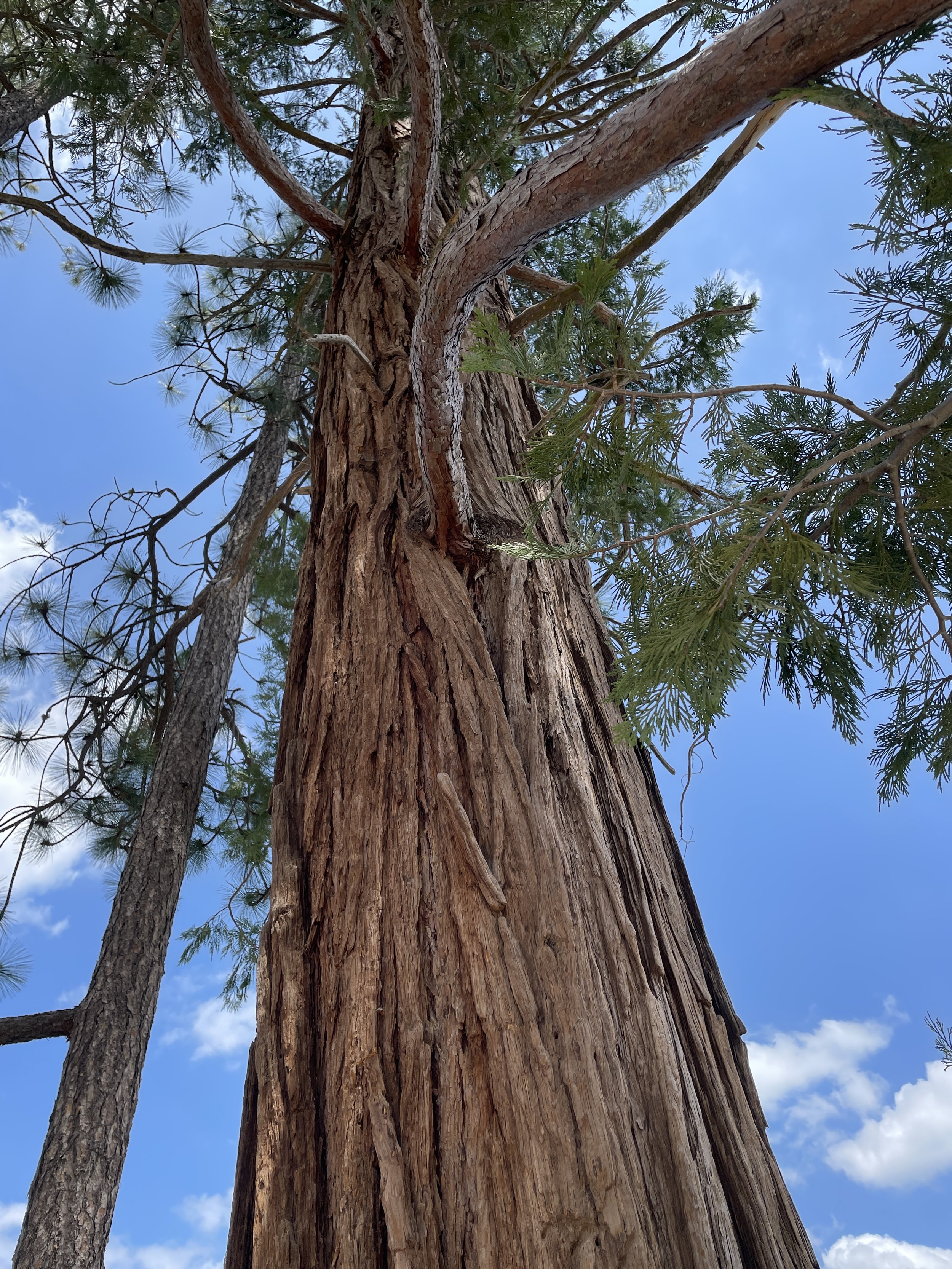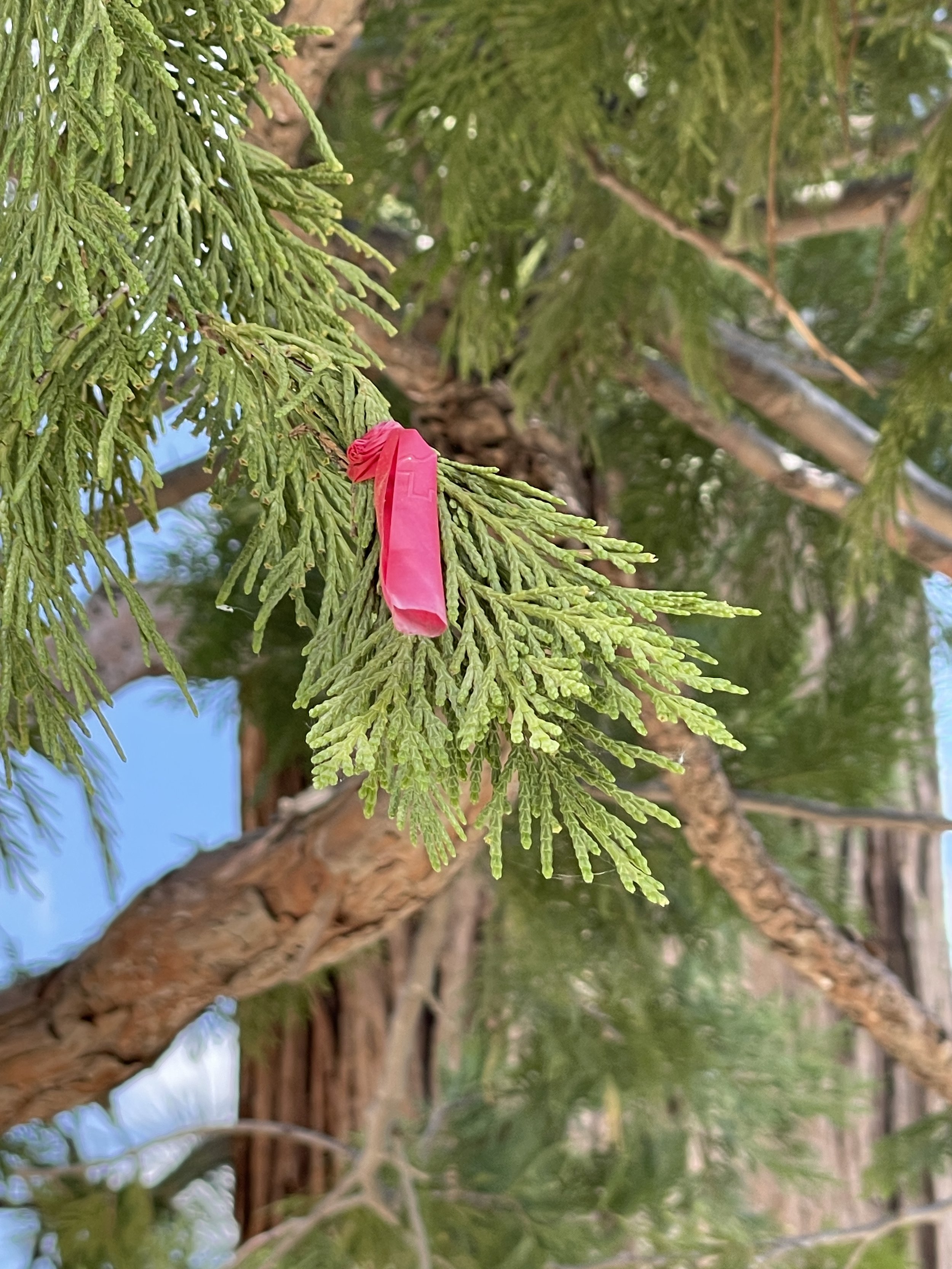
Incense Cedar
Calocedrus decurrens
wa’apI
This tree has undergone several name changes since it was first discovered. Today botanists place it in its own group, Calocedrus, literally meaning “cedars from California.” There are no true “cedars” in America, and so the name is sometimes hyphenated or enclosed in quotations.
The most distinguishing feature of the incense cedar is its aromatic wood and needles. The wood, although noted for its durability, is susceptible as it ages to dry rot fungus that enters through old fire scars. The primary commercial use for Incense cedar today is in the manufacture of pencils. This tree had many uses by Native Americans including as roofs for shelters as the bark can be stripped off in long sections.
The pollen of the tree is shed in winter, causing allergies in some people. High seed production under favorable conditions occurs every two to three years.
Description:
Size: large tree, 60-150 feet
Bark: cinnamon brown and deeply furrowed
Needles: small, only 0.25-.5 inch, overlapping each other and extending down the twig, aromatic when crushed and shiny green
Cones: nearly an inch long with two woody scales that split lengthwise when ripe to expose winged seeds
Shapes: young trees are triangular and symmetrical, older trees develop an irregular, often flat top
"I lived in a home when my kids were young, over 20 years ago and it had a massive Incense Cedar tree in the front yard. I didn’t like that tree back then. It provided so much shade my lawn would not grow. It dropped its cones that were very hard on tender little feet and it shed needles and bark everywhere. I drove by that house recently and the tree had been cut down.
I think if I were to live under a big Incense Cedar now I would appreciate the shade from the burning hot sun, I would admire the fascinating form of the cones and I would not plant a lawn under it.”


